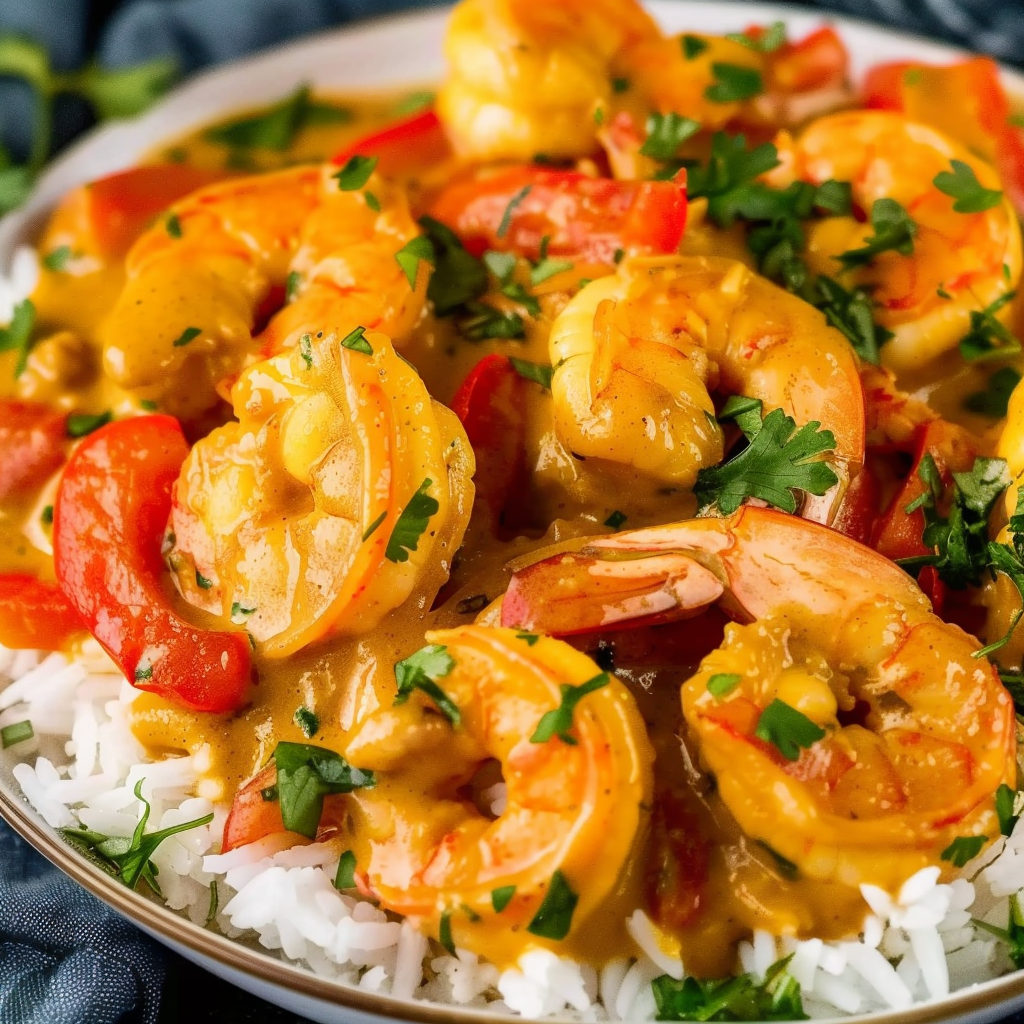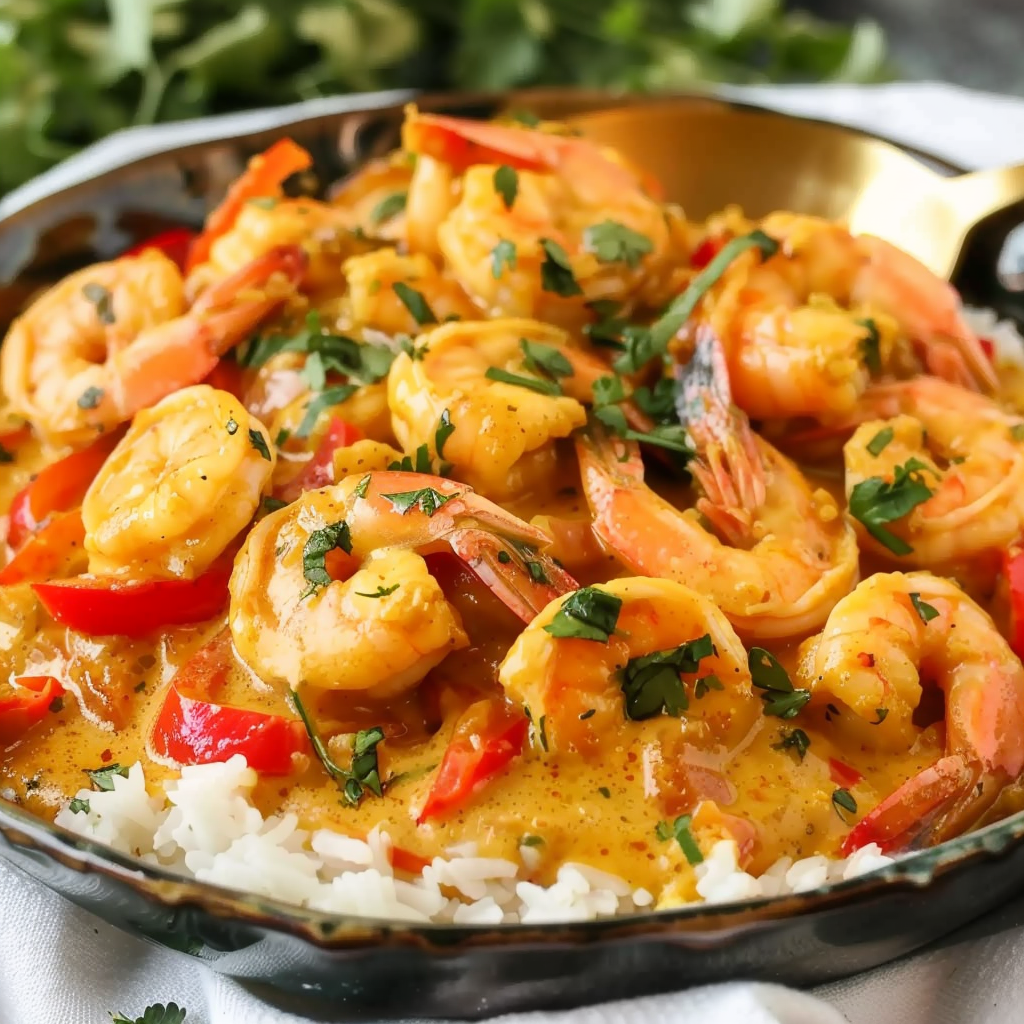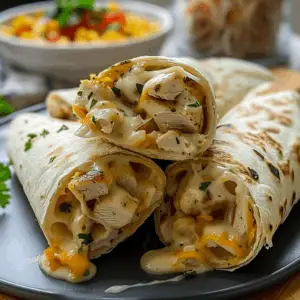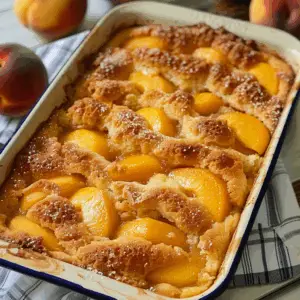Curry Shrimp with Coconut Curry Sauce
If you’re craving a flavorful, comforting meal that comes together quickly, curry shrimp with coconut curry sauce is your go-to dish. This recipe is a delicious balance of creamy, spicy, and savory elements — perfect for those busy weeknights when you need a satisfying dinner in a hurry. The combination of juicy shrimp, coconut milk, and warm curry spices delivers deep, rich flavor without hours of cooking.
Not only does this dish shine in taste, but it’s also naturally gluten-free, dairy-free, and easy to adjust based on your heat preferences. Plus, you can serve it with a variety of sides, from classic basmati rice to cauliflower rice for a low-carb option. Many quick shrimp recipes lack depth, but this one is built on layers of aromatics and spices, which ensures a bold, restaurant-quality curry at home.
This recipe draws inspiration from global curry traditions and uses everyday ingredients like garlic, ginger, and coconut milk — a staple in Southeast Asian and Caribbean cuisines. If you’re interested in learning more about the base of this dish, explore the history of curry powder, which shows how this flavorful blend came to be a kitchen essential worldwide. Likewise, understanding the benefits of coconut milk in cooking adds another layer to why this sauce is so silky and comforting.
Looking to expand your dinner rotation with more easy curry recipes? Check out this collection of coconut curry dishes for fresh ideas that match your flavor profile. Whether you’re new to cooking with shrimp or a curry lover, this dish hits the mark every time with its quick prep, creamy texture, and aromatic flavor.
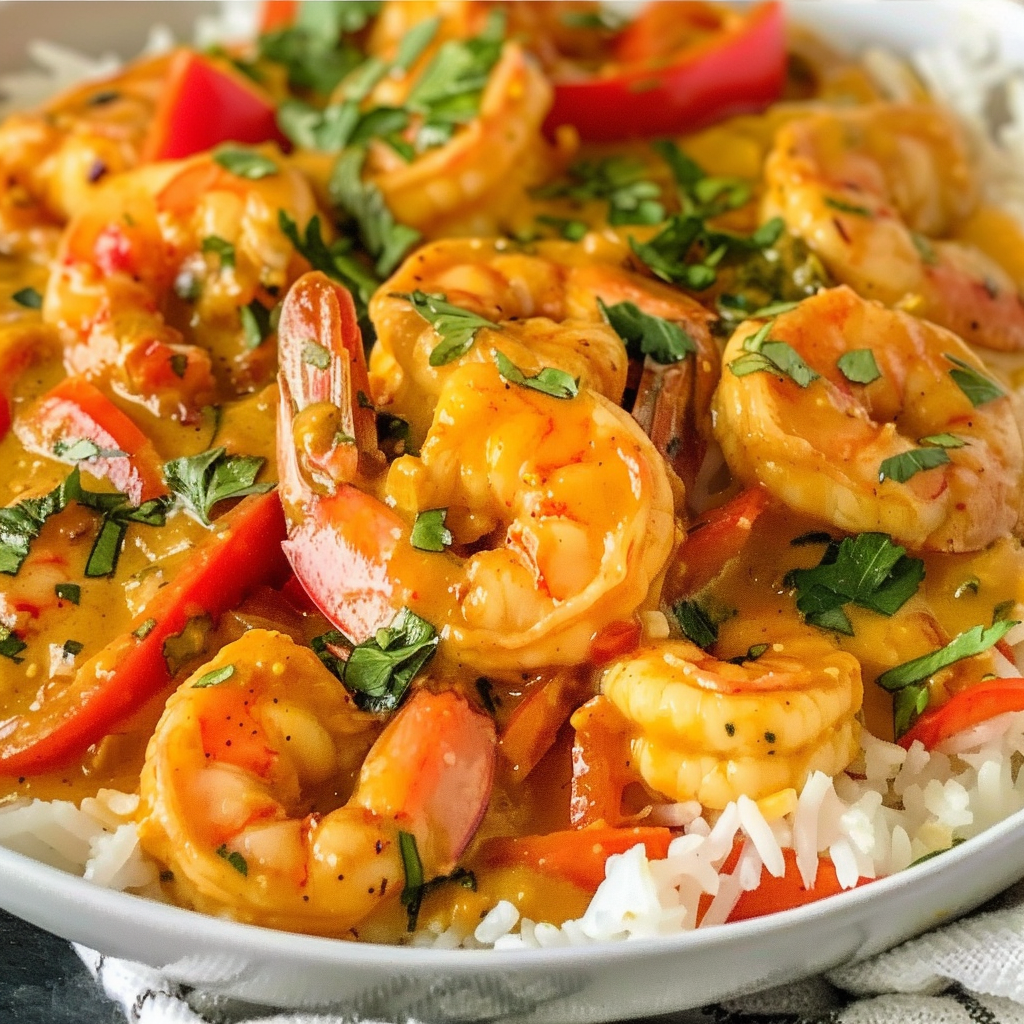
What Makes This Shrimp Curry Recipe Stand Out
This shrimp curry with coconut sauce isn’t just fast — it’s thoughtfully layered to maximize flavor without overcomplicating your evening routine. Many quick curry dishes sacrifice depth for convenience, but this recipe uses aromatics like onion, garlic, and ginger combined with classic curry spices to deliver bold taste in every bite.
Unlike some versions that rely on pre-made sauces or curry pastes, this dish builds flavor from scratch, giving you control over spice levels and ingredients. The creamy coconut milk balances the heat and acidity from tomatoes, creating a dish that’s both comforting and vibrant.
Another reason this curry stands out is its adaptability. You can easily add vegetables, switch up the protein, or adjust the consistency by simmering longer or adding more liquid. Whether you’re serving it over fluffy basmati rice or with low-carb cauliflower rice, this curry fits almost any dietary preference.
Curious about the nutritional value of seafood? Learn more about shrimp’s health benefits, including its high protein content and low fat profile. Want to plan more quick meals like this? Browse quick seafood dinner ideas to help build your weekly menu around fresh, flavorful proteins.
From its 20-minute prep time to its creamy, spiced finish, this dish is proof that easy shrimp recipes don’t have to be bland or boring.
Key Ingredients for Shrimp Curry with Coconut Milk
Crafting a delicious shrimp curry with coconut curry sauce starts with choosing the right ingredients. Each component in this recipe plays a specific role in building depth and delivering that signature creamy-spicy balance. Below is a breakdown of the essential ingredients and how they contribute to the dish.
Shrimp
-
Use large shrimp, peeled and deveined, for best texture and flavor.
-
Fresh or frozen shrimp can be used — just thaw frozen shrimp fully before cooking.
-
Avoid overcooking, as shrimp become rubbery quickly. They’re done when they turn pink and opaque.
Want to dive deeper into how shrimp are used in cuisines around the world? Explore this Wikipedia guide to shrimp for insights on varieties and preparation methods.
Coconut Milk
-
Use full-fat coconut milk for a richer, creamier sauce.
-
Light coconut milk can be substituted if you’re watching calories, but it may thin the sauce.
-
Shake the can well before opening to mix the solids and liquid.
To better understand this staple’s role in Southeast Asian and Caribbean cooking, read this overview of coconut milk.
Spices
-
Curry powder: A blend of turmeric, coriander, cumin, and more. Use a high-quality brand.
-
Turmeric: Adds warmth and a golden hue. Read more about turmeric and its benefits.
-
Cumin: Brings a smoky undertone.
-
Chili powder (optional): Adjust to your spice tolerance.
Interested in the origins and composition of curry spice blends? Here’s the history of curry powder.
Aromatics
-
Onion: Provides sweetness and depth as a base.
-
Garlic: Essential for a pungent, earthy foundation.
-
Ginger: Adds a fresh, zesty contrast to the coconut milk. For more on this ingredient, read about the culinary uses of ginger.
Tomatoes
-
Use either fresh or canned diced tomatoes depending on availability.
-
They introduce acidity, which balances the creaminess of the coconut milk.
Oil and Salt
-
Use a neutral vegetable oil like canola or avocado oil for sautéing.
-
Season with salt and pepper throughout to enhance flavor.
Garnish and Serving
-
Fresh cilantro gives a vibrant, herbaceous finish. Want to learn more? Visit this cilantro (coriander) herb guide.
-
Serve over rice — white, jasmine, or basmati work well. Explore different types of rice to find your perfect match.
-
For a creative presentation idea, check out this shrimp curry serving pin.
With the right ingredients and quality components, your coconut shrimp curry will always deliver rich flavor in every bite.
Tools & Equipment You’ll Need
To make this juicy shrimp curry come together efficiently, having the right tools on hand is essential. While this is a straightforward, one-pan recipe, a few key items will make preparation smoother and help maintain consistency in flavor and texture.
-
Large skillet or sauté pan
Use a heavy-bottomed skillet to evenly distribute heat. Non-stick or stainless steel pans work well for building the curry base without burning the spices. -
Cutting board and sharp knife
Chopping onions, garlic, and ginger finely ensures they cook down evenly and release their full aromatic potential. -
Measuring spoons and cups
Accuracy in spice and liquid measurements is crucial for consistent flavor, especially when scaling the recipe up or down for meal planning. -
Wooden spoon or heat-resistant spatula
For stirring the curry as it simmers and scraping the bottom of the pan to incorporate all the flavors. A flat-edged wooden spoon is particularly useful when toasting the spices to prevent them from sticking or burning. -
Small bowl or prep dishes
These help with mise en place — pre-measuring and organizing your ingredients before you begin cooking, which saves time and ensures you don’t forget anything mid-recipe.
While basic, these tools ensure you can make this flavorful curry shrimp without extra fuss. With just one pan and a few kitchen essentials, you’ll create a vibrant meal that feels far more elaborate than the effort it requires. For creative storage and spice organization ideas, explore this Pinterest board on curry prep.
Step-by-Step Instructions: How to Make Curry Shrimp
Mastering this shrimp curry with coconut curry sauce is all about timing and layering flavors. Follow these steps to make a rich, satisfying curry in just 20 minutes.
Step 1: Prep Your Ingredients
-
Peel and devein 1 lb of large shrimp if not already done. Pat them dry and set aside.
-
Finely chop 1 medium onion, mince 3 garlic cloves, and grate 1 tablespoon of fresh ginger.
-
Measure out all the spices (2 tsp curry powder, 1 tsp turmeric, 1 tsp cumin, ½ tsp chili powder if using).
-
Open and stir your can of coconut milk so it’s ready to pour.
Being fully prepped before heating your skillet saves time and ensures the shrimp aren’t overcooked later. Explore types of curry spices if you’re curious about customizing flavor profiles.
Step 2: Sauté Aromatics
-
Heat 2 tablespoons of vegetable oil in a large skillet over medium heat.
-
Add the chopped onion and sauté for 3–4 minutes until softened and translucent.
-
Stir in the garlic and ginger, cooking for about 1 minute until fragrant.
This forms the flavor base of the curry. Cooking aromatics properly is key to unlocking depth without burning them.
Step 3: Toast the Spices
-
Add the curry powder, turmeric, cumin, and chili powder if using.
-
Stir constantly for about 1 minute.
Toasting the spices is essential to bloom their flavors and avoid bitterness. This step builds the soul of your curry sauce.
Step 4: Add Tomatoes and Simmer
-
Pour in 1 cup of diced tomatoes (fresh or canned).
-
Stir and cook for 3–4 minutes until the tomatoes break down and the mixture thickens slightly.
The acidity from the tomatoes balances the richness of the coconut milk and intensifies the base sauce.
Step 5: Stir in Coconut Milk
-
Add 1 cup of coconut milk and stir to combine.
-
Bring to a gentle simmer and let it bubble for 2–3 minutes.
Be careful not to boil too hard, or the coconut milk may separate. For more on coconut milk’s properties, visit this guide.
Step 6: Cook the Shrimp
-
Add the prepared shrimp to the simmering sauce.
-
Cook for 4–5 minutes, stirring occasionally, until the shrimp turn pink and are cooked through.
Shrimp cook quickly — remove from heat immediately once they’re opaque. Learn more about the ideal cooking time for shrimp in this shrimp overview.
Step 7: Season and Serve
-
Taste and add salt and black pepper to your preference.
-
Sprinkle with chopped fresh cilantro for garnish.
-
Serve hot over cooked rice, naan, or low-carb options like cauliflower rice.
-
Check out this beautiful Pinterest presentation idea to inspire your plating.
This one-pan curry is perfect for busy weeknights, easy to customize, and deeply satisfying.
Flavor Variations You Can Try
This curry is versatile, and you can personalize it based on what’s in your kitchen or dietary needs.
Add Veggies
-
Bell peppers, peas, spinach, zucchini, or green beans can all be added.
-
Add firmer vegetables like bell peppers before the shrimp so they soften properly.
Make It Creamier
-
Stir in a spoonful of coconut cream at the end for extra richness.
-
Or swirl in a bit of yogurt (if not dairy-free) just before serving.
Change the Protein
-
Use chicken, tofu, or chickpeas instead of shrimp.
-
Adjust cooking times accordingly — tofu and chickpeas can go in earlier to absorb flavor.
Add Heat
-
For spicier curry, use fresh chili peppers or a dash of hot sauce.
-
Alternatively, swap in a spicy curry powder or add red pepper flakes.
Low-Carb or Keto-Friendly Tips
-
Serve over cauliflower rice or steamed greens instead of traditional rice.
-
Use full-fat coconut milk and avoid tomatoes if reducing carbs strictly.
Explore more quick curry variations from this Pinterest collection to keep your dinners exciting.
Expert Tips for the Best Shrimp Curry
Maximize your curry’s flavor and texture with these chef-approved tricks:
-
Don’t overcook shrimp — they should turn pink and slightly curled. Anything more will toughen the texture.
-
Use fresh aromatics like garlic and ginger over dried versions for full flavor impact.
-
Toast spices gently in oil to deepen flavor without bitterness.
-
Avoid boiling coconut milk rapidly — keep it at a low simmer to maintain its silky texture.
-
Use a non-stick or heavy-bottomed skillet to avoid scorching your spices and milk.
Want more tips on curry prep? Explore Pinterest curry hacks for easy tricks that enhance flavor with less effort.
How to Store and Reheat Leftovers
Proper storage ensures your curry is just as delicious the next day.
-
Refrigerate leftovers in an airtight container for up to 3 days.
-
Freeze for up to 2 months, but be aware that coconut milk may slightly separate. Stir well when reheating.
-
Reheat gently on the stovetop over low heat or in the microwave in 30-second bursts, stirring in between. Avoid high heat to keep shrimp tender.
Consider doubling the recipe and storing in meal prep containers for easy weekday lunches.
What to Serve with Shrimp Curry
This dish pairs well with a variety of sides that complement its creamy, spiced profile.
-
Steamed rice: White, jasmine, or basmati are all excellent choices. Curious about rice types? Learn more here.
-
Naan or roti: Perfect for scooping up sauce.
-
Cauliflower rice: For a lighter, low-carb meal.
-
Cucumber raita: A yogurt-based cooling side to balance spice.
-
Simple salad: Greens dressed with lemon and olive oil lighten the meal.
Browse other serving suggestions on this Pinterest shrimp curry board.
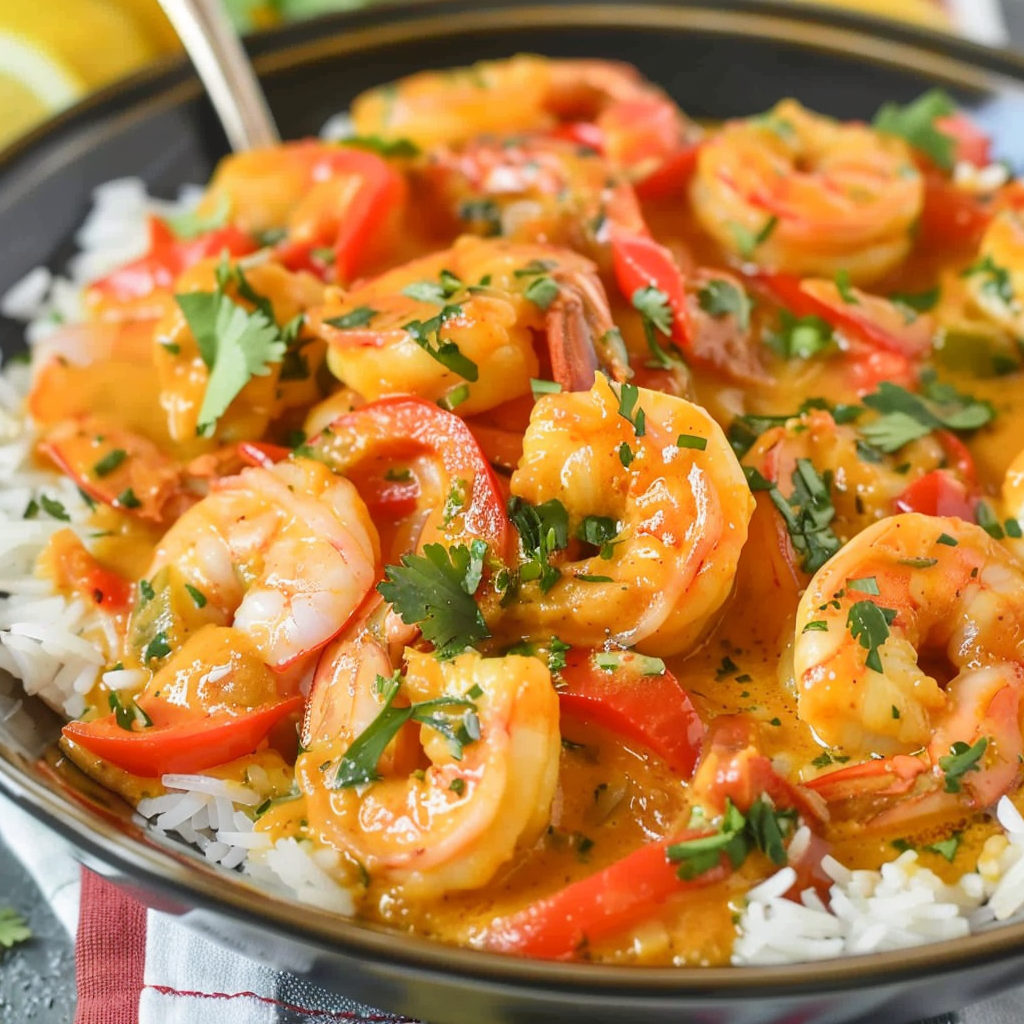
FAQs – Curry Shrimp with Coconut Milk
Can I use frozen shrimp for curry?
Yes, just thaw completely and pat dry before cooking to prevent excess water in the sauce.
Is this shrimp curry recipe spicy?
It’s mild by default. You can adjust the spice by adding or omitting chili powder, or incorporating fresh chilies.
What can I use instead of coconut milk?
Substitute with heavy cream or dairy-free creamers, though the flavor and texture will vary.
Can I make this ahead of time?
Yes. Prepare the curry base ahead and refrigerate. Add and cook the shrimp fresh for best texture.
What kind of curry powder should I use?
Use a mild or medium curry powder. Brands vary, so sample small batches to find your favorite.
How do I thicken coconut curry sauce?
Simmer longer to reduce, or add a cornstarch slurry (1 tsp cornstarch with 1 tbsp water) for a thicker sauce.
Can I make this shrimp curry without tomatoes?
Yes, though tomatoes add acidity. Replace with a small splash of lime juice or tamarind paste.
How do I make this shrimp curry vegan?
Swap shrimp for tofu or chickpeas and follow the same method. Coconut milk keeps it vegan-friendly.
Curry Shrimp with Coconut Curry Sauce Step by Step
This Juicy Shrimp Curry with Coconut Curry Sauce is the ultimate 20-minute dinner — fast, bold, and irresistibly creamy. Featuring tender shrimp simmered in a fragrant blend of garlic, ginger, curry powder, and coconut milk, this recipe is ideal for busy weeknights when you want a warm, comforting meal without the hassle. It’s naturally gluten-free, dairy-free, and highly adaptable for different spice levels or dietary preferences. Serve it over fluffy rice or a low-carb alternative for a dish that’s both satisfying and simple.
- Author: Clara
Ingredients
- 1 lb large shrimp, peeled and deveined
- 2 tablespoons vegetable oil
- 1 medium onion, finely chopped
- 3 garlic cloves, minced
- 1 tablespoon fresh ginger, grated
- 2 teaspoons curry powder
- 1 teaspoon ground turmeric
- 1 teaspoon ground cumin
- 1/2 teaspoon chili powder (optional)
- 1 cup diced tomatoes (fresh or canned)
- 1 cup coconut milk
- Salt and pepper to taste
- Fresh cilantro, chopped (for garnish)
- Cooked rice, for serving
Instructions
Heat the oil in a large skillet over medium heat. Add chopped onion and sauté until softened.
Stir in the garlic and ginger, cooking for about 1 minute until fragrant.
Add curry powder, turmeric, cumin, and chili powder if using. Cook, stirring constantly, for another minute to toast the spices.
Add the diced tomatoes and cook for 3–4 minutes until they break down slightly.
Pour in the coconut milk, stir to combine, and bring to a gentle simmer.
Add the shrimp and cook for 4–5 minutes, or until they turn pink and are cooked through.
Season with salt and pepper to taste.
Garnish with fresh cilantro and serve over cooked rice.
Notes
-
Use full-fat coconut milk for a richer sauce.
-
Avoid overcooking the shrimp — they only need 4–5 minutes.
-
Toast your spices before adding liquids to unlock full flavor.
-
Make it your own by adding vegetables or adjusting spice.
-
Perfect for meal prep — store leftovers in the fridge or freezer.
-
Pair with rice, naan, or cauliflower rice depending on your preference.
-
Garnish with fresh cilantro for a pop of color and freshness.
-
Easily scalable for a crowd or to enjoy as leftovers later in the week.
